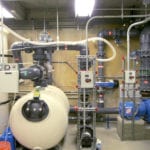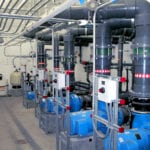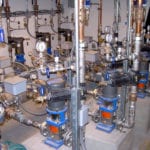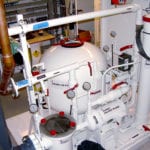How OTL Keeps Interactive Water Features Clean and Safe in the COVID-19 Era
Posted in News -
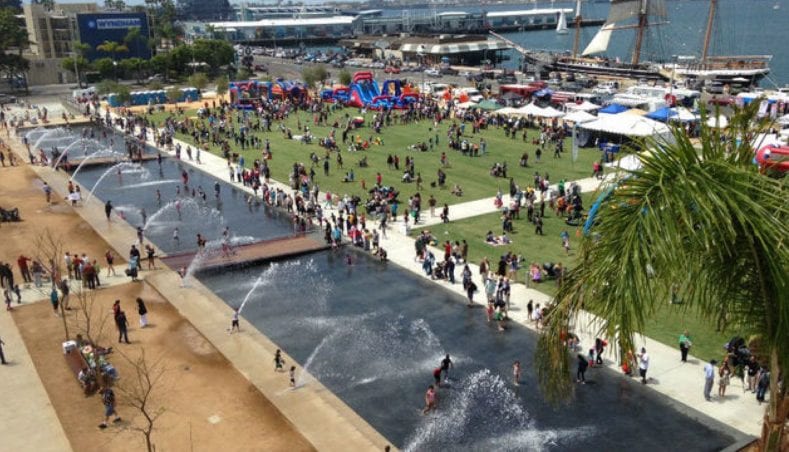
Summer is here at last! After months of sheltering in place, everyone is eager to get outside, feel the warm sun on their skin, and play in the water.
While many people are looking forward to enjoying interactive water features (IWFs) when they venture outside, safeguarding against viral transmission from these amenities is critical for property owners – especially in the era of COVID-19. Fortunately, the issue of safe water in IWFs has been addressed long before this pandemic, and solutions continue to evolve in light of the coronavirus.
For one, strict codes are in place to ensure that IWFs pose no health risk to the public, and local authorities are typically diligent about enforcing compliance with these codes.
Another shift we expect to see in IWF design itself is a more individualized play format that complies with social distancing protocols while still providing hours of enjoyment. In a pre-COVID environment, IWFs may have incorporated a large splash bucket that would serve as central gathering spot for more than one person – the incorporation of an individualized feature will mitigate the risk of any viral transmissions.
Given the current demand, OTL is at the forefront of delivering IWFs that exceed the highest sanitary standards, while also being environmentally friendly and cost efficient. Here are a few of the techniques our company utilizes in designing, constructing, and maintaining IWFs that are clean, safe, and ready for summer fun.
Filtration—A powerful filtration system that removes potentially harmful particles from the water is an essential step in keeping the water in our IWFs clear and sanitary. The modern filtration systems we use are designed to eliminate extremely small particles from the water – some as small as 1 micron. These filtration systems are also environmentally and user friendly as they only require a minimal amount of water, space, and energy to function.
Disinfection—Treating the water with disinfectants is the next step to ensuring our water features are sanitized and safe. Many of the processes and equipment OTL employs to disinfect our IWFs use materials such as chlorine, ozone, and UV radiation. Although all three of these materials eliminate bacteria and viruses while keeping the water crystal clear and fresh, the most effective form of disinfection comes from using UV radiation and ozone combined with chlorination.
When UV energy and ozone are combined, they create a synergistic reaction that tremendously improves sanitation. It truly is a case of 1+1=3. The UV and ozone used in combination creates what is known as the Advanced Oxidation Process (AOP). This combination will reduce the amount of chlorine necessary to maintain the same oxidation-reduction potential (ORP – a measurement that indicates how oxidizing or reducing a liquid is) level than UV and chlorine or chlorine alone.
During this process, water injected with ozone passes through a cylinder that is bombarded with UV light, and the efficacy of the system can monitored and assessed in real time. When ozone-injected water is subjected to UV light, hydroxyl radicals are formed, which are very efficient at sanitization. After the radical hydroxyls oxidize contaminants in the water, the byproduct is oxygen, so this is not only an efficient method of sanitizing, but also also sustainable.
In addition to reducing chemical usage and eliminating the need for shock treatments to disinfect IWFs (which also improves air quality), UV radiation on its own is especially effective against protozoans that can cause gastrointestinal illnesses if left unchecked. UV technology and rising concerns about safety and environmental issues related to chemical disinfectants have increased the use of this technology in keeping drinking water clean, and this method has become an integral feature in many of OTL’s IWFs.
Automation—Automation systems are a third tool OTL utilizes to maintain sanitary IWFs. Sensors monitor total dissolved solids (TDS) in the water, ORP, pH, flow rates and pressures in the pipes and at the pumps, and amperage draw on the pumps.
This data is analyzed by the control system and directs automated elements to control chemicals and equipment within the water features. For example, some automated controllers use variable frequency drives to control the motor speed of recirculation pumps, while others inject small CO2 bubbles into the system to neutralize pH instead of acid.
Effective automation systems are critical to keeping IWFs sanitary on a continual basis. These automation systems can also be set up with data logging capability, which can be important for maintaining the records that are required by many local health departments.
Interactive water features are one of the most iconic parts of summer, and they are especially appealing to many people this year after being cooped up indoors for so long in compliance with COVID-19 mandates.
Delivering IWFs that are clean and safe is a top priority for OTL. By utilizing filtration, disinfection, and automation processes in designing, constructing and maintaining our IWFs, we are able to ensure that everyone who comes in contact with these water features will be protected from viral transmission and free to enjoy these amenities all summer long.
Featured Articles
- Getting to Know OTL’s Administrative/Accounting Assistant Nathan Touche
- Centers With Well-Designed Experiential Water Features Can Attract 30,000 Visitors Per Week
- Fountains of Light: California Water Features Developer Opens North Texas Office
- AI and Facility Management: How to Avoid Potential Pitfalls
- Safety First and Last: Creating a Safe Site in any Environment
